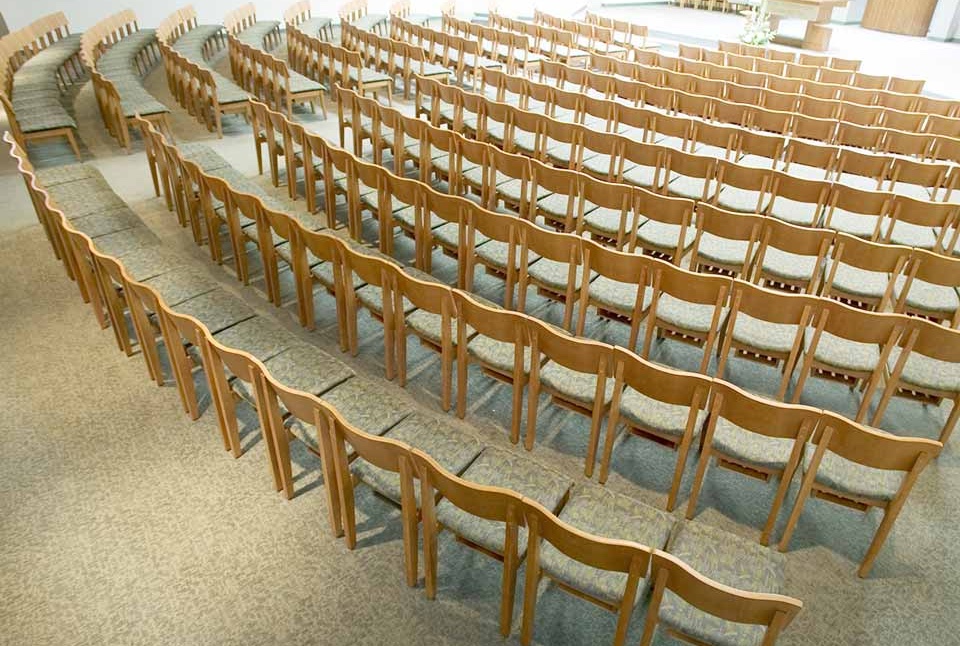
Worship chairs, often overlooked, play a crucial role in the design and functionality of religious spaces. From grand cathedrals to humble chapels, the seating arrangements significantly influence the worship experience. This article delves into the history, design, functionality, and impact of worship chairs in various religious contexts, highlighting their importance in fostering a conducive environment for spiritual activities.
Historical Context
The history of worship chairs can be traced back to ancient religious practices where seating was minimal or non-existent. Early Christian gatherings were often held in homes or catacombs, where congregants would stand or sit on the floor. As Christianity spread and formal churches were built, seating became more structured.
During the medieval period, pews began to appear in churches. These long benches allowed more people to sit and listen to sermons, reflecting a shift towards a more congregational style of worship. Pews were often fixed in place and made of wood, adorned with intricate carvings and religious symbols.
In contrast, other religious traditions had different seating arrangements. For instance, in Islamic mosques, worshippers sit on the floor, and in many Hindu temples, the same practice is followed. The use of chairs in these contexts is usually reserved for the elderly or those with physical difficulties.
Design and Functionality
Modern worship chairs are designed with a blend of aesthetics, comfort, and functionality. The design considerations include:
- Comfort and Ergonomics: Worship services can be long, and comfort is paramount. Chairs are designed to provide adequate support to the back and legs, with padding and ergonomic shapes to ensure that congregants can sit for extended periods without discomfort.
- Durability and Maintenance: Given the high frequency of use, worship chairs need to be durable and easy to maintain. Materials such as high-quality wood, metal frames, and durable fabrics are commonly used. Additionally, chairs are often designed to be stackable or foldable, allowing for easy storage and flexibility in seating arrangements.
- Aesthetic Appeal: Church chairs contribute to the overall ambiance of a religious space. They are often designed to complement the architectural style and interior decor of the worship area. This includes the choice of colors, materials, and finishes that reflect the sanctity and solemnity of the space.
- Flexibility and Configuration: Modern worship practices require adaptable seating arrangements. Chairs that can be easily reconfigured to accommodate different types of services, events, and group sizes are highly valued. This flexibility allows religious spaces to serve multiple purposes, from regular worship services to community events and special ceremonies.
Impact on Worship Experience
The type and arrangement of seating in a worship space can significantly affect the worship experience. Here are some ways in which worship chairs impact congregants:
- Sense of Community: The arrangement of chairs can foster a sense of community and belonging. Circular or semi-circular arrangements can make the service feel more inclusive, allowing congregants to see each other and feel more connected.
- Focus and Attention: Comfortable seating helps congregants focus on the service without being distracted by discomfort. Ergonomically designed chairs support good posture, which can enhance concentration and participation.
- Accessibility: Chairs that are designed to accommodate individuals with disabilities ensure that all members of the congregation can participate fully in worship services. This inclusivity is essential for creating a welcoming and accessible worship environment.
- Aesthetic Enhancement: Well-designed chairs enhance the visual appeal of a worship space, contributing to the overall spiritual atmosphere. Beautiful, well-maintained seating can uplift the spirits of congregants and add to the sense of reverence and solemnity.
Innovations and Trends
The design and functionality of worship chairs continue to evolve with changing needs and technological advancements. Some notable trends and innovations include:
- Eco-Friendly Materials: There is a growing trend towards using sustainable and eco-friendly materials in the production of worship chairs. This includes the use of recycled materials, low-emission finishes, and ethically sourced wood.
- Technological Integration: Modern worship services often incorporate multimedia presentations. Chairs are now being designed with features like built-in charging ports and holders for electronic devices to support these technological needs.
- Customizable Designs: To cater to the unique needs of different congregations, manufacturers offer customizable worship chairs. This includes options for different fabrics, colors, and finishes, as well as custom logo embroidery.
- Enhanced Comfort Features: Innovations in materials and ergonomics continue to enhance the comfort of worship chairs. Memory foam padding, lumbar support, and breathable fabrics are some of the features being incorporated to improve comfort.
Worship chairs are integral to the worship experience. From historical pews to modern, ergonomic designs, these chairs have evolved to meet the changing needs of congregations. They provide comfort, enhance the aesthetic appeal of worship spaces, and foster a sense of community and inclusivity. As religious practices continue to evolve, worship chairs will undoubtedly continue to adapt, ensuring that they remain a vital component of spiritual life.
Related Posts
Tree Removal in Beaverton: Why Professional Services Matter
Tree removal can be a complex and hazardous task, especially in residential and ...
Read More
Investing in Sustainable Energy: Harnessing Profit and Purpose
In recent years, sustainable energy has emerged as a powerful investment opportu...
Read More
Understanding Market Volatility: Tips for Staying Steady During Turbulent Times
Market volatility is an inherent characteristic of financial markets. Periods of...
Read More
The Impact of Technology on Investment Strategies: Embracing the Digital Revolution
In today's digital age, technology has transformed every aspect of our lives, in...
Read More




